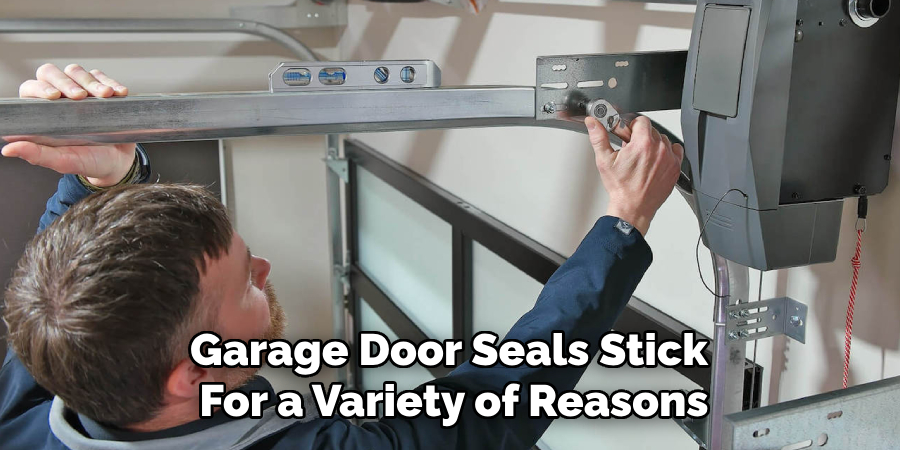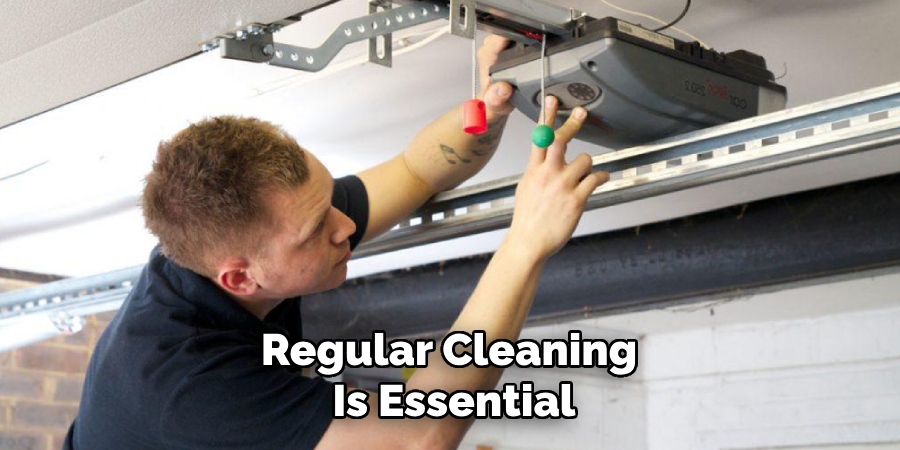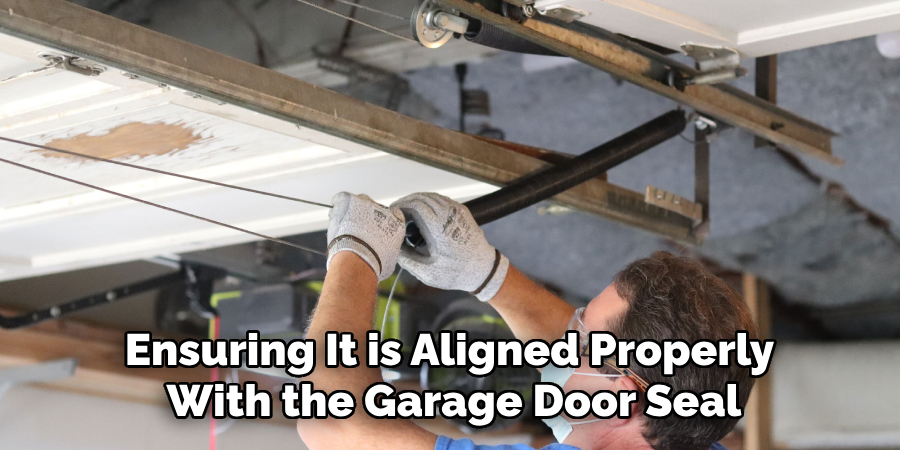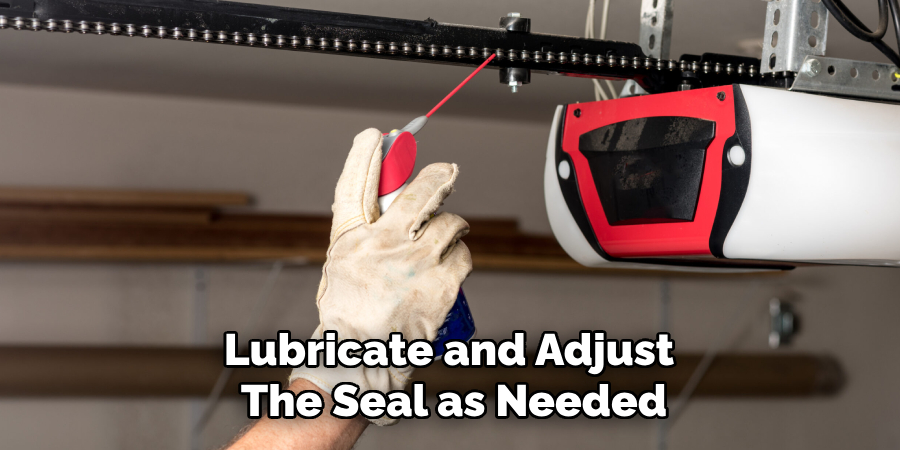Have you ever struggled with a garage door that sticks to its seal, especially during extreme weather conditions? This common issue can be frustrating, but there are simple solutions to keep your garage door seal from sticking and ensure smooth operation year-round. In this guide, we’ll explore practical tips for how to keep garage door seal from sticking, from cleaning and lubricating the seal to choosing the right materials and products.

Whether you’re dealing with hot, cold, or wet weather, our comprehensive advice will help you prevent sticking and extend the life of your garage door seal.
Importance of Preventing Garage Door Seals from Sticking
Preventing garage door seals from sticking is crucial for several reasons. Firstly, a sticking seal can cause damage to the garage door opener and other mechanical components, leading to costly repairs.
Moreover, it can compromise the insulation of your garage, allowing unwanted drafts, moisture, and pests to enter, which can result in higher energy bills and potential damage to stored items. Additionally, a properly maintained seal ensures the security of your garage, as a compromised seal can make it easier for intruders to tamper with the door.
Understanding Why Garage Door Seals Stick
Garage door seals stick for a variety of reasons, and understanding these can help you take the necessary steps to prevent this issue. One of the primary culprits is weather conditions, particularly extreme temperatures. In hot weather, the heat can cause the seal material to become tacky and adhere to the garage door. Conversely, cold weather can make the seal less flexible, leading to hardening and sticking.

Humidity and moisture also play a significant role; when the seal absorbs water, it can create a vacuum effect, causing it to cling to the door. Additionally, dirt, grime, and debris can accumulate on both the door and the seal, increasing the likelihood of sticking.
10 Methods How to Keep Garage Door Seal from Sticking
Method 1: Regular Cleaning of the Seal and Door
To prevent your garage door seal from sticking, regular cleaning is essential. Begin by using a mild detergent mixed with water to clean both the seal and the bottom edge of the garage door. Use a soft cloth or sponge to wipe away dirt, dust, and debris that accumulate over time.
Pay special attention to the areas where the seal comes into contact with the floor. Rinse thoroughly with clean water to remove any soap residue, and then dry the surfaces with a clean towel. This process should be done every few months or more frequently in areas with high dust or debris.
Method 2: Lubricating the Seal with Silicone Spray
Applying silicone spray to the garage door seal can significantly reduce sticking. Silicone spray is ideal because it lubricates without attracting dirt and grime. After cleaning the seal, hold the spray can about six inches away and apply an even coat along the entire length of the seal.
Be sure to cover all areas where the seal contacts the floor or the door. Allow the silicone to dry for a few minutes before closing the door. This lubrication should be reapplied every few months or whenever you notice the seal starting to stick again.
Method 3: Applying a Weather-Resistant Lubricant
For those who live in regions with extreme weather conditions, a weather-resistant lubricant can offer extra protection for your garage door seal. These lubricants are designed to withstand rain, snow, and temperature fluctuations, ensuring that the seal remains flexible and non-sticky.
After thoroughly cleaning the seal, apply the lubricant as per the manufacturer’s instructions. These products usually come in a spray form or as a gel that can be spread with a cloth. Reapply the lubricant seasonally or as needed to maintain its effectiveness. Using a weather-resistant lubricant helps keep the seal pliable and prevents it from hardening and sticking during adverse weather conditions.

Method 4: Installing a Vinyl Garage Door Seal
Replacing your existing seal with a vinyl garage door seal can help prevent sticking. Vinyl is a durable material that remains flexible in various temperatures and does not stick as easily as rubber or other materials. To install a vinyl seal, first remove the old seal by unscrewing or pulling it off the bottom of the door. Measure the length of the door and cut the new vinyl seal to fit.
Attach the new seal using screws, adhesive, or a track system, depending on your door model. Ensure the seal is properly aligned and secured. Vinyl seals provide a smooth surface that resists sticking and offers long-lasting protection against the elements.
Method 5: Using Talcum Powder or Cornstarch
A simple and effective way to keep your garage door seal from sticking is to use talcum powder or cornstarch. After cleaning and drying the seal, lightly dust it with talcum powder or cornstarch. These substances create a barrier that reduces friction and prevents the seal from adhering to the floor or door. Reapply the powder every few weeks or whenever you notice the seal beginning to stick. This method is particularly useful during hot and humid weather when the seal is more likely to become tacky. Talcum powder and cornstarch are inexpensive, easy-to-use solutions that keep the seal operating smoothly.
Method 6: Adjusting the Door Alignment
Improper alignment of the garage door can cause uneven pressure on the seal, leading to sticking. Check the door’s alignment by observing its movement as it opens and closes. If the door appears crooked or if the seal is not making uniform contact with the floor, you may need to adjust the alignment.
Start by tightening any loose hardware, such as the hinges and brackets. If further adjustment is needed, consult your garage door manual or a professional technician for specific alignment instructions. Properly aligned doors distribute pressure evenly across the seal, reducing the likelihood of sticking and ensuring smooth operation.
Method 7: Installing a Threshold Seal
A threshold seal can provide an additional barrier between the garage door seal and the floor, reducing sticking. Threshold seals are typically made of rubber or vinyl and are installed on the garage floor where the door meets the ground. Measure the width of your garage door and cut the threshold seal to fit.
Use adhesive to secure the threshold seal to the floor, ensuring it is aligned properly with the garage door seal. This creates a smooth, non-stick surface for the door seal to rest on when the door is closed. Threshold seals not only prevent sticking but also provide extra insulation and protection against water and debris.

Method 8: Applying a Wax Coating
A wax coating can be an effective way to prevent your garage door seal from sticking. Car wax or a specialized door seal wax can be used for this purpose. After cleaning and drying the seal, apply a thin layer of wax using a soft cloth or sponge. Buff the wax until it forms a smooth, protective layer over the seal.
This coating should be reapplied every few months or as needed to maintain its effectiveness. Wax creates a slick surface that reduces friction and prevents the seal from adhering to the floor or door. It also adds an extra layer of protection against the elements, keeping the seal in good condition.
Method 9: Keeping the Garage Floor Clean
A clean garage floor is essential in preventing the garage door seal from sticking. Dirt, debris, and other substances can accumulate on the floor and adhere to the seal, causing it to stick. Regularly sweep and mop the garage floor, paying special attention to the area where the seal contacts the ground.
Use a mild detergent and water to clean the floor, and ensure it is completely dry before closing the garage door. Maintaining a clean floor reduces the amount of debris that can cause the seal to stick, ensuring smooth operation of the garage door.
Method 10: Scheduling Regular Professional Maintenance
For optimal performance and to prevent your garage door seal from sticking, consider scheduling regular professional maintenance. A qualified technician can inspect the seal and the entire garage door system, identifying any issues that could cause sticking. They can clean, lubricate, and adjust the seal as needed, ensuring it remains in good condition.
Professional maintenance should be done at least once a year or more frequently in harsh weather conditions. This proactive approach helps catch potential problems early and keeps your garage door operating smoothly, preventing the seal from sticking and ensuring long-term durability.

Conclusion
Preventing your garage door seal from sticking not only enhances the functionality of your door but also prolongs the life of the seal and maintains the overall condition of your garage. By implementing the methods outlined in this guide, such as applying lubricants, using talcum powder or cornstarch, adjusting door alignment, and keeping the garage floor clean, you can effectively reduce friction and avoid common sticking issues.
Additionally, installing vinyl or threshold seals and scheduling regular professional maintenance can provide added protection and long-term benefits. Thanks for reading, and we hope this has given you some inspiration on how to keep garage door seal from sticking!
About
Safety Fic is a distinguished figure in the world of Diy design, with a decade of expertise creating innovative and sustainable Diy solutions. His professional focus lies in merging traditional craftsmanship with modern manufacturing techniques, fostering designs that are both practical and environmentally conscious. As the author of diy, Safety Fic delves into the art and science of Safety Fic-making, inspiring artisans and industry professionals alike.
Education RMIT University
(Melbourne, Australia) Associate Degree in Design (Safety Fic) Focus on sustainable design, industry-driven projects, and practical craftsmanship. Gained hands-on experience with traditional and digital manufacturing tools, such as CAD and CNC software.
Nottingham Trent University
(United Kingdom) Bachelor’s in diyfastly.com and Product Design (Honors) Specialized in product design with a focus on blending creativity with production techniques. Participated in industry projects, working with companies like John Lewis and Vitsoe to gain real-world insights.
Publications and Impact
In diy, Safety Fic his insights on indoor design processes, materials, and strategies for efficient production. His writing bridges the gap between artisan knowledge and modern industry needs, making it a must-read for both budding designers and seasoned professionals.
